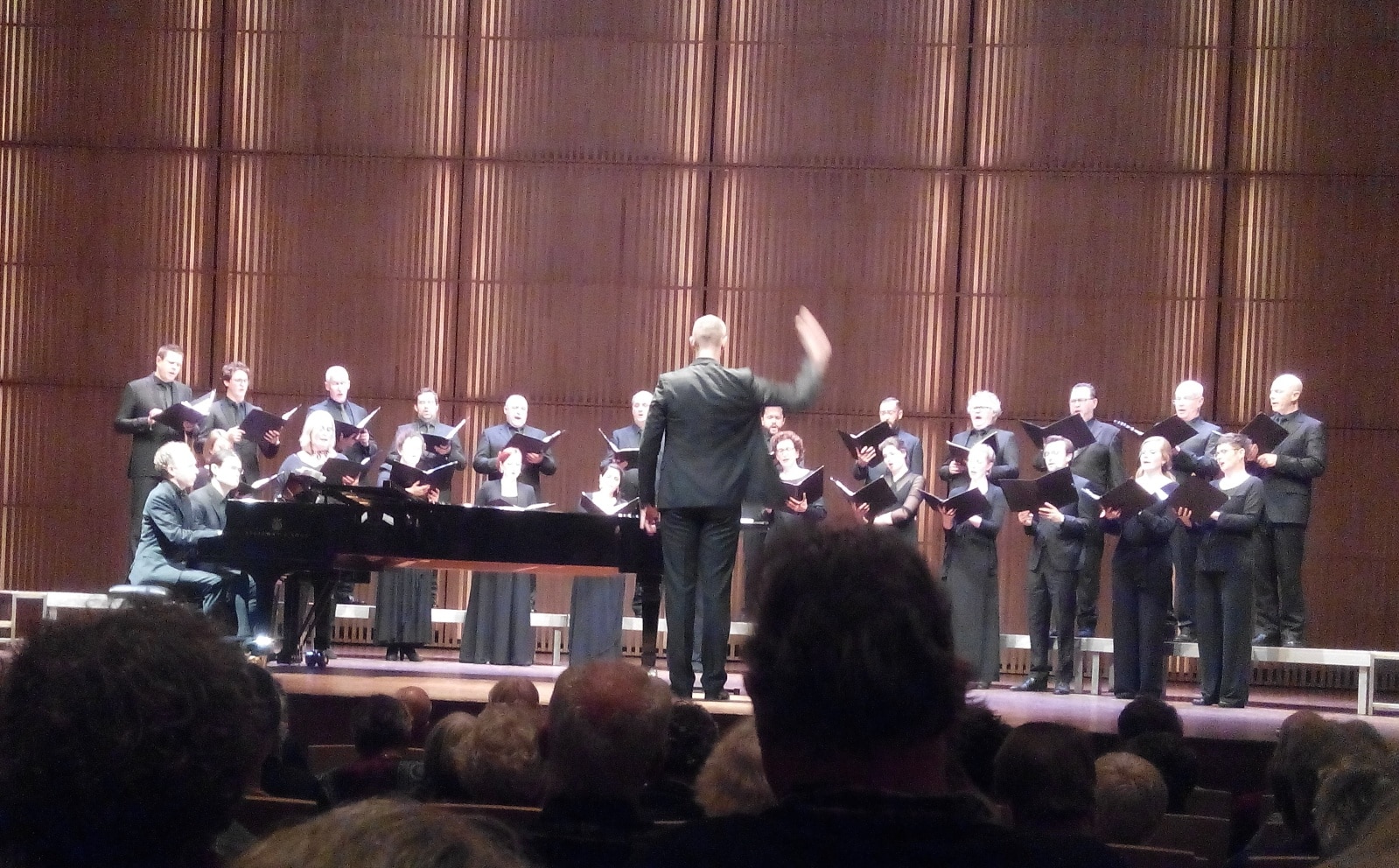The Nederlands Kamerkoor presents an adventurous concert on Wednesday 24 January in Muziekgebouw aan 't IJ to kick off a short tour. On the lecterns are rarely heard music by Lili Boulanger and Ton de Leeuw. Clapboard is the famous Symphony of Psalms by Igor Stravinsky in a version for choir and piano four hands by Dmitri Shostakovich. Ralph van Raat and Bobby Mitchell sign for the piano part, chief conductor Peter Dijkstra leads the proceedings.
No Sacre du printemps without Diaghilev
In 1929 Serge Diaghilev, the Russian impresario who had meant so much for the acceptance and development of Russian music, died. He introduced the opera Boris Godunov in Europe and inspired Stravinsky to create high-profile compositions for his Ballets Russes. Without Diaghilev no Firebird, Petrushka or Sacre du printemps.
Diaghilev's importance to his own career did not escape Stravinsky. He immortalised the impresario in his Polka for piano duo and carried his ballet Les noces to him. His death came as a shock and Stravinsky worshipped his benefactor in Venice, where he had died.
Symphony orchestra but different
When shortly afterwards the also Russian conductor Serge Koussevitzky asked him to write a symphony for his Boston Symphony Orchestra, Stravinsky seized the assignment with both hands. But he had reservations about the symphonic form. According to him, it evoked too strong associations with the music of the nineteenth century.
It was immediately clear to him that in his first symphony (leaving aside a youth work) he would immediately give the genre a new direction. He would replace the accursed sonata form with baroque-related counterpoint. So that even the sound would not recall the romantic orchestra, he removed the high strings; only cellos and double basses were allowed to remain. The clarinets were also silenced; in their place came five flutes and as many oboes.
Get rid of sentiment
Even more striking is the addition of a choir. By his own admission, Stravinsky had been walking around with the idea of a psalm symphony for some time, 'and I didn't let that deter me.' Stravinsky interpreted his publisher's request to finally write something 'popular' in his own way. 'I understood that not as "adapted to the understanding of the general public", but as "something that is universally loved".'
He continues: 'The fact that I chose Psalm 150 had partly to do with its popularity, but another and equally compelling reason was my strong desire to wash the ears of all those composers who had abused these magisterial verses as a capstone for their own lyrical-sentimental "feelings".' Incidentally, Stravinsky preferred to have the high choral voices sung by boys to avoid the feminine vibrato - a Romantic stylistic device par excellence.
Religious and musical rapture
The Symphony of Psalms has three movements, the first of which Stravinsky says he composed in a state of "religious and musical rapture". The piece is built on a sequence of two minor thirds connected by a major third. With this, Stravinsky depicted a vision of the prophet Elias sailing to heaven in a horse and carriage.
The first movement opens with firm percussive chords, to which the choir scans lyrics from Psalm 39, Exaudi orationem meam, Domine. Notable is the double fugue in the second movement, Exspectans exspectavi Dominum. 'It is an inverted pyramid, beginning with a purely instrumental fugue in the high register' wrote Stravinsky. This is followed by a a cappella sung fugue on verses from Pslam 40 that includes the low register.
The third and final part, Laudate Dominum, is a setting of the 'Alleluja' from Psalm 150. In it, Stravinsky was inspired more by the sound of the syllables than by their meaning. This sometimes leads to wondrous accents, for which he faced criticism. Annoyed, he riposted: 'Do such people have no concept whatsoever of the way the early polyphonists chopped up their words?'
After all, a Stravinsky does decide for himself how he composes.
more info and tickets here.
PS 25-1-2018. The concert was very successful. What was special was that 2 pieces by Ton de Leeuw were placed between the Symphony of Psalms.

